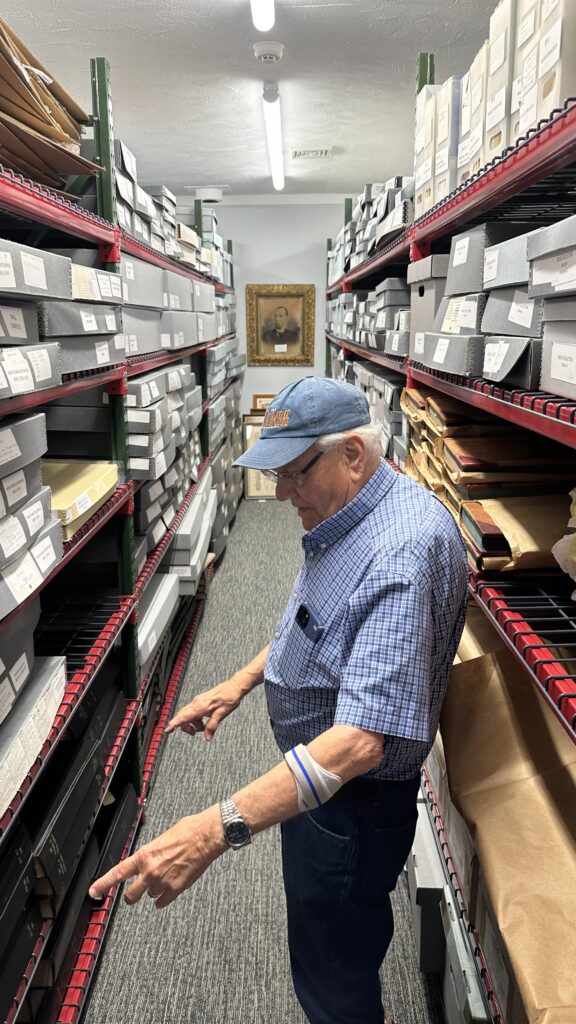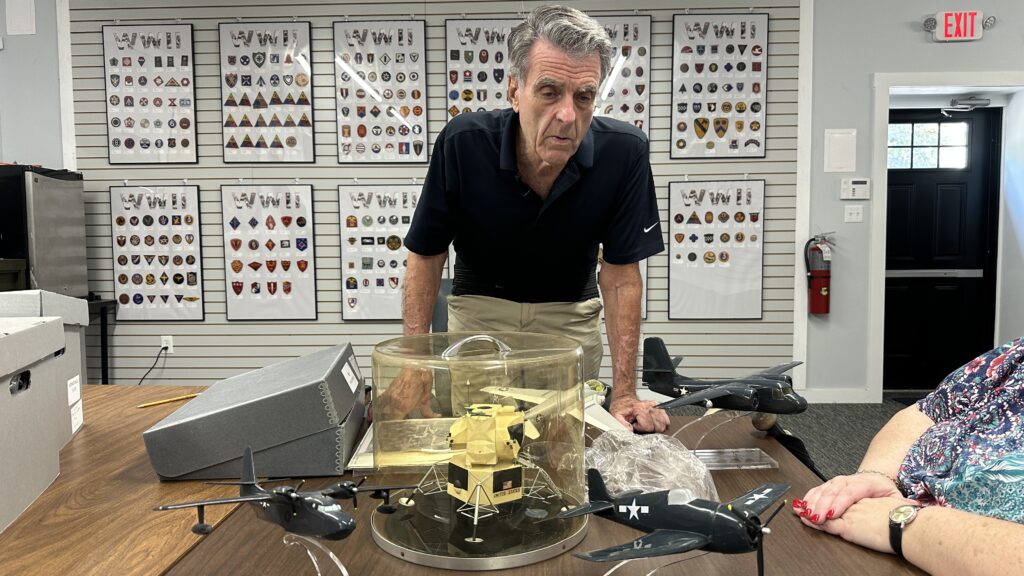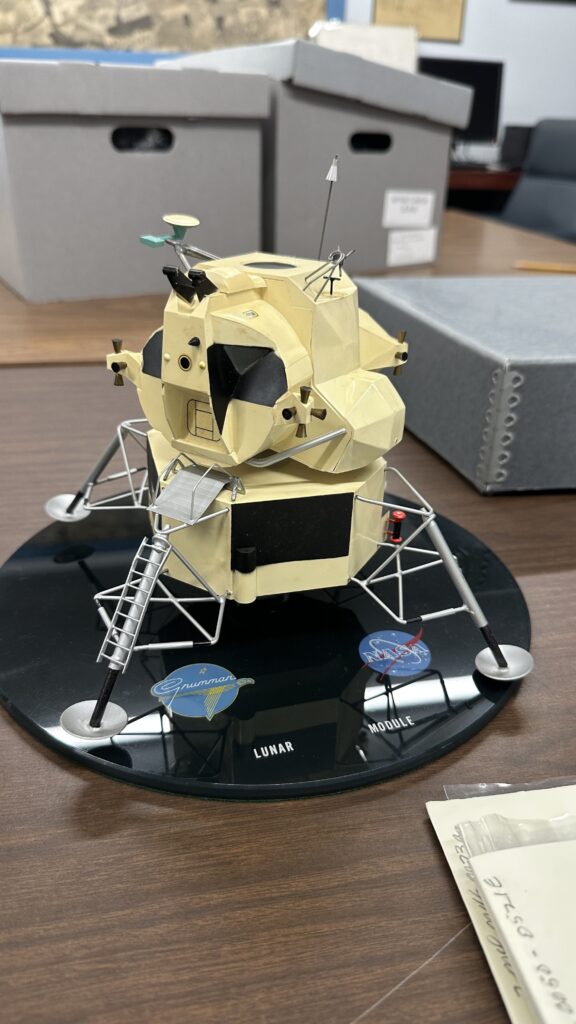There’s something profoundly grounding about stepping into a room full of artifacts, photographs, and paper records most people have never seen. Yesterday, I had the chance to do just that during a visit to the Newtown Historic Association in Bucks County. Dave Callahan was nice enough to give me a tour of his well organized archives.
Tucked inside this quiet institution is an astonishing collection that tells the hidden story of American ingenuity. It’s not the flashy history taught in textbooks, but it’s the kind that shaped real lives, changed national outcomes, and made everything we’re doing with Before The Moon possible.

The Stories They’re Preserving
Inside the archive, I saw:
-
Early photographs and blueprints of Lavelle Aircraft Corporation
-
Rare photos of the original Seabird airplane built by Fleetwings
-
Wartime documents that traced Newtown’s industrial role through WWII and into the Space Age
-
Handwritten notes and technical material tied to local engineering teams whose work went into real missions
One of the most meaningful moments came during a conversation with Arthur Liese. His father, Henry A. Liese, was a member of the engineering team that worked on the Fleetwings Seabird—an innovative twin-float amphibian aircraft from the early 1930s that helped define Bucks County’s contribution to aviation history. Arthur spoke with clarity and pride about the legacy of the Seabird and the small team behind it. His family has been part of this local industrial heritage for generations.

I also spoke with Eleanor O’Rangers of the Southeastern Pennsylvania Cold War Historical Society, who underscored the critical importance of maintaining and digitizing these collections. She’s been working tirelessly to preserve NADC and Cold War-era history so it doesn’t vanish when buildings are repurposed and memories fade.
These aren’t just names on paper. They’re the people who made parts for satellites, designed high-altitude aircraft, and helped shape the hidden spine of Cold War aerospace.
Why This Work Matters
Historic societies like Newtown’s do the kind of long-view, often invisible work that keeps history from becoming rumor. They preserve the paper trail, the photographic proof, the handwritten sketches that remind us our communities played real roles in shaping national stories.
They safeguard the context behind innovation. Without them, we lose more than dates and names—we lose the depth of what was possible and how ordinary people in small towns achieved extraordinary things.
In the case of Lavelle and Fleetwings, these stories are directly tied to our documentary. Without these societies, much of what we’ve uncovered wouldn’t exist.

How You Can Support
-
Visit your local historic society. Even one visit can show you the richness hiding in plain sight.
-
Donate if you can. These organizations often rely on volunteer hours and local funding to survive.
-
Volunteer your time or digitization skills. There’s always more material than people to process it.
-
Share what you learn. Every bit of visibility helps preserve the next piece of the puzzle.
We’re proud to feature many of these stories in our film Before The Moon, and even prouder to support the organizations preserving them.
Because history doesn’t just live in space centers or archives in Washington. Sometimes it lives in a file cabinet down the street.
📣 Help Us Spin the Story Back Into the Spotlight
We’re telling this story in Before The Moon—our documentary about forgotten pioneers and the towns that trained heroes. If you’re intrigued, inspired, or just plain shocked this all happened in Pennsylvania, we invite you to:
✅ Share this post
✅ Visit BeforeTheMoonFilm.com
✅ Follow @BeforeTheMoonFilm on Instagram
Because before we walked on the Moon… we spun in Warminster.


Leave a Reply